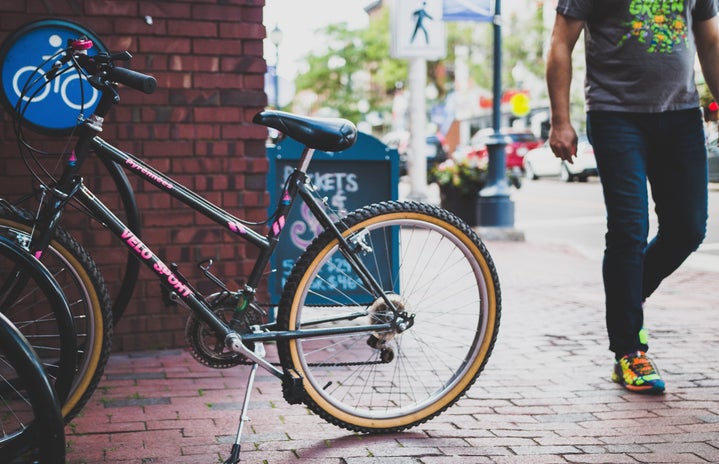I will not watch 13 Reasons Why. When I heard the book was being made into a TV show I rolled my eyes. I read the book at 17, a lot later than a lot of other people I knew had read it. Not long after I read it a close family friend committed suicide. Painful memorials followed, with obsessive moments spent staring at his Facebook page.
As a sexual assault survivor and someone who struggles with PTSD and depression, I understand suicide and suicidal thoughts on a very personal level. Reading 13 Reasons Why was a frustrating, upsetting experience. In many ways, 13 Reasons Why is an example of a narrative that encourages teenage girls that suicide is beautiful.
Let me explain. I do not think that 13 Reasons Why was not created with a good heart. I think it was. And the overall message: “be fucking nice to people” is a good one that I hope we all can figure out. While 13 Reasons Why in many ways challenges the idea that women who commit suicide are beautiful, by having the person who is in love with her tell her story, Hannah is idealized rather than actualized.
This is similar to the many problems I have with Looking for Alaska. While John Green was clearly basing the story off of his own personal experiences, the story becomes much more about Pudge and his perceptions of Alaska then it does about Alaska herself. Alaska is in his mind, the most beautiful a person can ever be, and despite the novel’s potency, it creates an image of a destroyed person as being in some way sexy, erotic. It perpetuates the dialogue that if someone would just love this girl, take care of her, somehow she would be okay.
Look at this beautiful edgy depressed girl let’s all fetishize the shit out of her.
When I was 14 many people told me I reminded them of Alaska. A girl who was completely destroyed, and who needed help, but who was fun and beautiful and who they loved. This idealization is not helpful, and creates a dialogue in which we encourage young girls to “show their pain.” Whether it be through drugs, alcohol, or self-harm. But this isn’t what we should be encouraging at all, and 13 Reasons Why does not succeed in it either.
While I have read that the depictions of suicide and rape in the show 13 Reasons Why don’t shy away from these themes, I think that the opposite can be just as harmful. In a recent interview, Selena Gomez stated that she thought the show stayed true to its source material and was, “beautifully tragic.” But Selena doesn’t seem to understand that there is no beauty in suicide. Graphic depictions of suicide and rape are not meant for the people who have suffered through those things. Graphic depictions of suicide and rape are meant to acost people who have never gone through those things. People who are suicidal who watch these types of images are more likely to be attracted to suicide, despite that not making sense to people who have never had suicidal thoughts. Additionally, PTSD has a tendency to make people who are triggered incredibly suicidal and likely to self-harm when triggered. Public school districts have already had to come out with statements after teenagers cited self-harming because of 13 Reasons Why.
Without getting into much detail, graphic imagery of suicide is what goes through my mind during a suicidal episode, and while it is scary and real, it is also uncontrollable. Suicidal imager and public suicides often increase the rates of suicide. And the novel 13 Reasons Why most likely has the opposite problem of the show. It creates the image of suicide as being a beautiful thing, one which can be romanticized.
Pain being romanticized does not help anyone. And furthermore, the ideas behind the show and the narrative are problematic. Hannah gets revenge. The people that hurt Hannah are hurt back, and they no longer can settle for malignant behavior. But that’s not what happens when someone commits suicide and it is problematic to persist the narrative that if you kill yourself somehow things will be alright. Because that’s not what happens when you kill yourself.
This narrative that Hannah lives in, the aftereffect, the idea of the long lasting, is a fallacy. Yes, when people kill themselves, of course, we still love them. Of course, we wish they were still here and that shitty things never happened to them. But that narrative does not encourage people to stop considering suicide.
Okay I know this is a serious article but what the fuck does this photo mean? I am so confused, you can’t say no to something when has anyone (outside of pacts) been offered suicide?
Suzanna Bator, a fellow Her Campus writer agrees with me: “The problem with 13 Reasons Why is it makes depression look like a situational, spontaneous illness. Hannah was relatively OK when she first moved to the new town, but as people treated her more and more poorly, she lost hope for herself and chose what she thought was the only way out. But depression isn’t all emotionally charged; things can be great for someone and they’d still consider ending it all; I know I have.” Suzanna and I both agree that the show and the novel conflate problems of PTSD with issues of depression, and is rarely specific with what Suzanna’s actual problems are.
And furthermore, the idea that a relationship with someone, anyone, can save you from suicide is absolutely ludicrous. Suzanna continues: “Being good to someone won’t cure their problems. Blaming other people for your problems won’t help you recover. This show is not about depression, it’s about being a good, decent human being.” Romantic and friendly relationships can, of course, be helpful in dealing with mental illnesses if they are stable and healthy and both partners understand each other, but Clay dating Hannah would not have necessarily “fixed” Hannah. Relationships don’t decrease the risk of suicide, therapy, medication, and dismantling our taboos around suicide decrease the risk of suicide. And being a good human being shouldn’t be about trying to stop suicide, it should be about compassion and empathy for all people.
Much of the book’s message surrounds the idea that if people were just better, Hannah would be okay. But people being better does not necessarily solve suicide. It can help, of course, it can help. But suicidal thoughts are nuanced, and difficult, and can have so many sources. My previous birth control often caused me to have suicidal thoughts. When my PTSD is triggered, suicidal thoughts pop up for me right away. I’ve had friends who have attempted suicide while on drugs.
Helping people with suicide has a lot more to do with having conversations about suicide. While 13 Reasons Why may move towards discussions of suicide, it does not do so in a healthy way that will help people who are actually suffering. In the future, I hope to see narratives perpetuating that are more about the people who are actually suffering. Made by and for people who have felt the things that I feel. A great example of a graphic novel that does this well is Hyperbole and a Half by Ali Brosh. When I asked Suzanna for commentary she offered the show Olive Kitteridge which is a novel by Elizabeth Strout that was made into an HBO miniseries. Shows like these that depict realistic struggles are what will assist the mental health community. Furthermore, representation of POC as people who struggle with mental illness is vital to the destruction of the stigma of mental illness as a white upper-class issue. Mental illness is being communicated well through the rap community right now, especially with artists like Earl Sweatshirt coming more into the mainstream. (If you want to read more about how rappers like Kendrick and Earl are brought depression into the mainstream in 2015 go here.) The media we should be celebrating should be that which encourages a holistic understanding of depression, rather than a snapshot or cliched portrayal which does more damage than help.
Photo sources: Feature, 1, 2, 3

